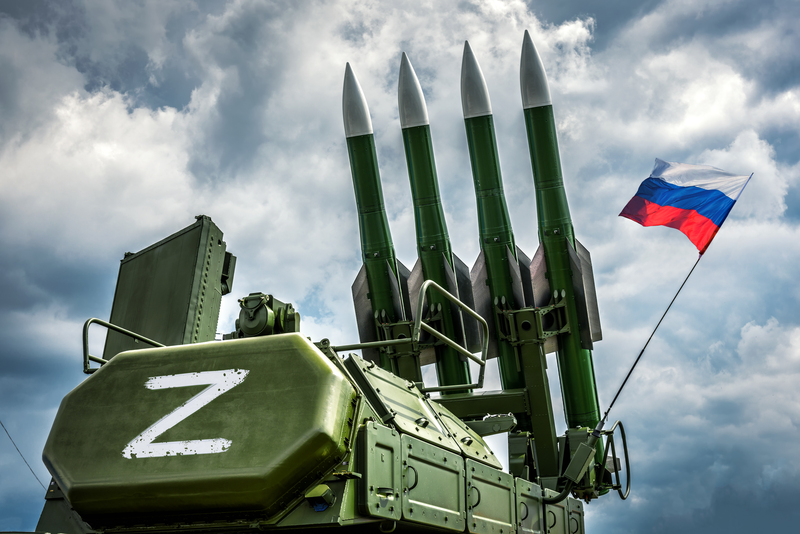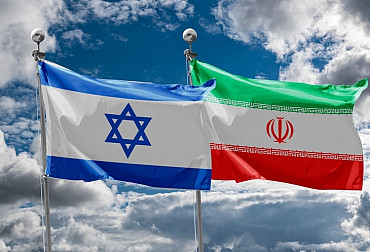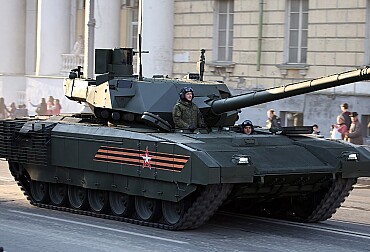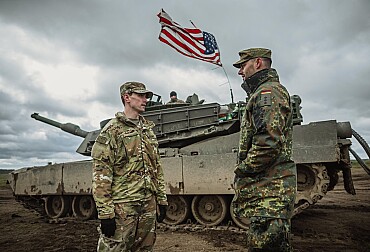Analyzing Europe's defense capabilities in the face of contemporary global threats
In recent years, the geopolitical landscape has undergone significant shifts, with the resurgence of great power competition marking a departure from the post-Cold War era's relative stability. Europe, historically a focal point in global strategic calculations, finds itself reassessing its defense capabilities amidst growing concerns about potential threats from Russia and, to a lesser extent, China. This analysis delves into Europe's current defense posture, examining its strengths, weaknesses, and its ability to counter potential aggression from these major powers.
The European Defense Landscape
The European defense landscape is characterized by a complex interplay of national defense policies, regional alliances, and broader international security frameworks. This landscape has evolved significantly in response to the changing nature of global threats, particularly those posed by Russia and China. Understanding this landscape requires an examination of its key components: national defense capabilities of European states, the role of NATO, and the growing significance of the European Union in defense matters.
National Defense Capabilities of European States
European countries vary widely in their defense capabilities and strategic priorities, influenced by their historical experiences, geographic positions, and economic strengths.
-
Major Military Powers: The United Kingdom, France, and Germany are Europe's traditional military powerhouses. The UK and France, both nuclear powers, have significant global reach and advanced military technologies. Germany, despite its economic prowess, has been more restrained in its military engagements but is a key player in European defense initiatives.
-
Eastern European States: Countries like Poland, Romania, and the Baltic states have increased their defense spending in response to the perceived Russian threat. Their focus is on enhancing territorial defense and integrating more closely with NATO structures.
-
Nordic Countries: Nations like Sweden, Norway, and Finland, though not all NATO members, have robust defense capabilities and are focusing on Arctic security, given the region's growing strategic importance.
-
Southern Europe: Countries in Southern Europe, such as Italy, Spain, and Greece, balance their defense efforts between regional security concerns in the Mediterranean and contributions to broader NATO and EU missions.
The Russian Threat
The Russian threat to Europe is multifaceted, encompassing conventional military aggression, hybrid warfare, cyber attacks, and political destabilization efforts. Russia's annexation of Crimea in 2014 and its ongoing involvement in Eastern Ukraine have been wake-up calls for Europe, leading to a reassessment of the Russian military threat.

Russia's military, while lacking the economic support base of the Soviet era, remains formidable. Its capabilities include a large tank force, a significant artillery arsenal, advanced air defense systems like the S-400, and a modernizing navy. Furthermore, Russia maintains a substantial nuclear arsenal, which serves as a strategic deterrent.
Russia has demonstrated proficiency in hybrid warfare tactics, as seen in Ukraine and in various cyber operations targeting Western elections and critical infrastructure. These tactics, which blend conventional and unconventional methods, pose a significant challenge to European defense strategies that are traditionally focused on conventional threats.
Russia's military capabilities, though constrained by economic limitations, are substantial and have been subject to significant modernization efforts in recent years. Key aspects include:
-
Strategic Nuclear Forces: Russia maintains a large and sophisticated nuclear arsenal, which is central to its defense strategy. This includes intercontinental ballistic missiles (ICBMs), submarine-launched ballistic missiles (SLBMs), and long-range bombers. The modernization of this nuclear triad poses a significant strategic deterrent to NATO and Europe.
-
Conventional Forces: The Russian army, with its substantial tank and artillery forces, is designed for large-scale, high-intensity conflict. The annexation of Crimea and the conflict in Eastern Ukraine demonstrated Russia's willingness to use conventional forces assertively.
-
Air and Naval Power: Russia has focused on modernizing its air force and navy. The deployment of advanced aircraft and the development of new naval platforms, including submarines, enhance its ability to project power and challenge NATO forces.
-
Anti-Access/Area Denial (A2/AD): Russia has developed robust A2/AD capabilities, particularly in areas like Kaliningrad and Crimea. These include advanced air defense systems, anti-ship missiles, and electronic warfare systems, complicating NATO's ability to operate in these regions.
Geopolitical Strategies
Russia's approach to Europe is heavily influenced by its geopolitical strategy, which seeks to reassert its influence in what it considers its near abroad and to challenge Western dominance in the international order.
-
Near Abroad: Russia is keen on maintaining a sphere of influence in the post-Soviet space. This is evident in its actions in Ukraine, Georgia, and its pressure on the Baltic states.
-
Divide and Influence: Russia attempts to exploit divisions within Europe, using energy politics, economic ties, and support for populist political movements to undermine European unity.
Hybrid Warfare and Asymmetric Tactics
Russia has adeptly employed hybrid warfare tactics, blending conventional military power with unconventional means, including cyber attacks, disinformation campaigns, and the use of proxies.
-
Cyber Operations: Russia has engaged in significant cyber operations targeting European countries. These include hacking government networks, influencing elections, and spreading disinformation.
-
Information Warfare: The strategic use of media and online platforms to influence public opinion and political processes in Europe is a key component of Russia's asymmetric arsenal.
-
Use of Proxies and Private Military Companies: In conflicts like Ukraine and Syria, Russia has used proxy forces and private military companies (e.g., the Wagner Group) to achieve its objectives while maintaining plausible deniability.
The Impact of Russian Actions on European Security
Russia's actions have had a profound impact on European security, leading to a reevaluation of defense strategies and an increased emphasis on deterrence and defense.
-
NATO's Response: NATO has strengthened its eastern flank through enhanced forward presence, increased military exercises, and the development of rapid response forces.
-
European Defense Initiatives: In response to the perceived Russian threat, there has been a renewed focus within Europe on increasing defense spending, enhancing military readiness, and pursuing initiatives like the European Defence Fund and PESCO (Permanent Structured Cooperation).
-
Energy Security: Europe's reliance on Russian energy, particularly natural gas, is a significant strategic concern, given Russia's history of using energy supplies as a political tool.
The Chinese Factor
While China is not an immediate military threat to Europe in the same way Russia is, its growing global influence and activities, particularly in Africa, the South China Sea, and along the Belt and Road Initiative routes, have security implications for Europe. China's rapidly advancing military capabilities, especially in areas like cyber warfare, space, and missile technology, are also of concern.
China's Global Ambitions and Strategies
China's global ambitions are encapsulated in its long-term strategic vision of becoming a dominant global power. Key elements influencing European security include:
-
Belt and Road Initiative (BRI): This ambitious infrastructure and investment project aims to connect Asia with Africa and Europe through land and maritime networks. While primarily economic, the BRI has strategic implications, potentially increasing China's influence in Europe and its periphery.
-
Technological and Economic Influence: China's growing role in global technology and telecommunications, exemplified by companies like Huawei, poses challenges for Europe in terms of cybersecurity and technological dependence. Economic influence, particularly in Southern and Eastern Europe, also translates into potential political leverage.
-
Diplomatic Engagement: China has been actively engaging with European countries, both bilaterally and through forums like the 17+1 initiative with Central and Eastern European countries. This engagement is often seen as an attempt to divide European consensus on issues critical to China.
Military Modernization and Power Projection
China's military modernization program has significantly enhanced its capabilities, with implications for global security dynamics.
-
Blue Water Navy: China is rapidly expanding and modernizing its navy, enabling it to project power far beyond its immediate region. The launch of new aircraft carriers and other sophisticated naval assets is indicative of its blue-water ambitions.
-
Advanced Missile Technology: China's development of advanced missile systems, including anti-ship ballistic missiles and hypersonic weapons, represents a strategic challenge that could have implications for European security, particularly in scenarios involving U.S. and NATO forces.
-
Cyber and Space Capabilities: China's focus on cyber warfare and space capabilities presents new challenges for European security, including threats to critical infrastructure and space assets.
mplications for European Security
The implications of China's rise for European security are diverse and require a strategic response.
-
Cybersecurity Threats: Europe faces the challenge of protecting its critical infrastructure and information networks against potential Chinese cyber operations.
-
Economic Security: Europe's economic ties with China are substantial, but there is growing concern about dependence on Chinese technology and investment, which could have security implications.
-
Geopolitical Considerations: China's growing global influence challenges the traditional Western-dominated international order. Europe needs to navigate this shift, balancing economic interests with security concerns and values like human rights and rule of law.
-
NATO's Focus: While NATO traditionally focuses on the Russian threat, there is an increasing recognition of the need to consider the implications of China's rise for transatlantic security.
European Responses
European responses to the Chinese factor are evolving, reflecting a more nuanced approach to balancing engagement with Beijing against security concerns.
-
5G Networks and Cybersecurity: European countries are grappling with decisions on the involvement of Chinese companies in 5G networks, balancing economic and technological benefits against security risks.
-
Strategic Autonomy: The EU is increasingly focused on achieving strategic autonomy, which includes reducing dependency on Chinese technology and investment.
-
Diplomatic Engagement: Europe is seeking to engage China on global issues like climate change and trade, while also being more assertive on human rights and security matters.
Europe's Defense Capabilities
Europe's defense capabilities, shaped by historical, political, and economic factors, are a complex mosaic reflecting the diverse priorities and resources of individual nations and collective entities like NATO and the EU. To understand Europe's ability to respond to modern security challenges, it is essential to examine its conventional forces, nuclear deterrence, cyber and hybrid warfare defense, and the role of multinational defense cooperation.
Conventional Forces
Europe's conventional military capabilities vary significantly across nations, with France, the United Kingdom, and Germany being the most prominent military powers.
-
United Kingdom: The UK maintains a well-equipped and professional military, with notable strengths in naval power, including its aircraft carriers, and a global reach.
-
France: France possesses a robust and versatile military capability, including a nuclear-powered aircraft carrier, a strategic airlift, and a professional expeditionary force.
-
Germany: As Europe's largest economy, Germany has substantial resources but has faced criticism for underinvestment in its military. Recent years have seen increased defense spending and efforts to modernize the Bundeswehr.
-
Other European Nations: Other countries, such as Italy, Spain, Poland, and the Nordic countries, contribute significantly to Europe's overall defense capabilities, though often with specific limitations in terms of power projection and advanced technology.
Nuclear Deterrence
Europe's nuclear deterrence is primarily upheld by the United Kingdom and France, both of which are nuclear-armed states.
-
United Kingdom: The UK's nuclear deterrent is based on its submarine-launched Trident missile system, providing a continuous at-sea deterrent.
-
France: France maintains an independent nuclear force, known as the Force de frappe, which includes submarine-launched ballistic missiles and air-launched nuclear weapons.
These nuclear capabilities play a critical role in deterring major aggression but are complemented by the strategic nuclear umbrella provided by the United States through NATO.
Cyber and Hybrid Warfare Defense
Europe faces significant challenges in the realm of cyber and hybrid warfare, with Russia's sophisticated cyber capabilities and China's growing prowess in this domain posing particular threats.
-
Cyber Defense Initiatives: Individual European countries have been strengthening their cyber defense capabilities. NATO has also recognized cyberspace as a domain of operations, leading to increased focus and resources in this area.
-
Countering Hybrid Threats: Europe is still developing effective strategies to counter hybrid threats, which combine conventional and unconventional tactics. The EU has launched initiatives like the European Centre of Excellence for Countering Hybrid Threats to enhance collaboration and resilience.
Multinational Defense Cooperation
Multinational defense cooperation is a cornerstone of Europe's defense capabilities, primarily through NATO and EU frameworks.
-
NATO: NATO remains the principal security guarantor in Europe, with its collective defense principle under Article 5 as a central deterrent against aggression. NATO's Enhanced Forward Presence in Eastern Europe is a direct response to the Russian threat.
-
European Union: The EU has been pursuing initiatives like Permanent Structured Cooperation (PESCO) and the European Defence Fund to foster greater defense collaboration among member states. The goal is to enhance EU operational readiness and contribute to burden-sharing within NATO.
Conclusion
In conclusion, while Europe possesses significant defense capabilities, there are notable gaps and challenges, particularly in addressing hybrid and cyber threats, and in achieving greater unity and coordination. The Russian threat is immediate and tangible, particularly in Eastern Europe, while the Chinese threat is more indirect but growing. Europe's ability to defend itself against potential attacks from Russia or China depends on maintaining and enhancing its conventional and unconventional defense capabilities, ensuring U.S. commitment to NATO, and achieving greater strategic coherence among European states. The evolving nature of global threats necessitates a dynamic and adaptable approach to defense, one that Europe must continuously strive to achieve.







